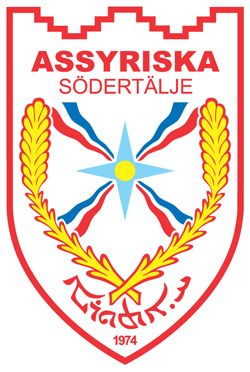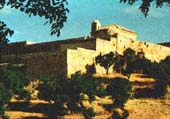Telefon: 08‑5195 5488
E-post: info@visarkiv.se
Besöksadr: Torsg. 19, Stockholm
- Virtual Assyria
- Preface
- The Assyrians as an example
- Assyria – your land in Cyber Space
- Cyberland – Music, Nationalism & the Internet
- With music as a boundary marker
- Christians from the Middle East
- The liturgy of the Syrian churches
- A visit to a musical rebel
- Assyrian music on the Internet
- Expressive specialists
- References
Cyberland –
Music Nationalism & the Internet

Welcome to Assyria, "Your land on the Cyber Space", the Nineveh On-line greets us on its home page on the 5th June, 1997.
Does Assyria exist? Is it a country, a nation, or an organisation? Well, what is a nation, exactly? What does it mean when some people call themselves Assyrians – a people?
"Cyberland Assyria". It sounds like a vision of the future, or possibly a video game. With the opportunities that global electronic networks put at our disposal, our experience of reality is changing. The "real" world now has a rival. Through virtual realities, such as "The Internet World", we are forced to consider the question: what actually is a nation, a community, a union, etc?
Well then, does Assyria exist? Yes, but not as a nation in the old sense, where we imagine a country with geographical borders – a specific region inhabited by people who call themselves Assyrians. Certainly, the ancient Assyrian Empire – "the land between the rivers" – Beth Nahrain or Mesopotamia, can still be pointed out on a map. But for more than 2,500 years the region has been in the hands of other nations.
Click here to view a historical map of the Assyrian Empire
When the creators of Nineveh On-line's home page welcome us to Cyber Space it is obvious that they are referring to something very different from a specific geographical region.
Obviously Internet exists, and Nineveh On-line's home page exists. And through this and many, many other knowledge banks and information banks, Assyria also exists.
In the new debate on mobile, displaced, fragmented life worlds, media technologies have an important explanatory power. Through them we can dissolve the boundaries of time and space. In the future we will live in media worlds and fantasy landscapes which lack a concrete, systematic foundation. We surf the net and zap between channels (Löfgren 1995).
The ethnologist Orvar Löfgren presents an ironic picture of how postmodern man is portrayed in sociological literature. But the Assyrian virtual reality should not be described in terms of "homelessness" and "transitoriness". Maybe the 1990s' Swedish zappers and surfers can be seen as homeless nomads in a timeless and spaceless media world, trying to escape from life's reality. What the Assyrians are doing is just the opposite: in an unstable existence in exile round the world, Internet web sites and home pages can truly be seen as a kind of virtual home – a fixed point where common values and common culture can be established and shared with others.
Using Alta Vista to search the World Wide Web on the 24th June, 1997, the search term "Assyrians" generated 2023 hits on the net while "Assyria" generated 3663. Nineveh (the name of one of the ancient capitals) generated 2203 hits. The Swedish spelling "Assyrien" generated 115 hits, mostly on Swedish and German web sites.
Assyria can be found on Nineveh On-line. The home page offers hyperlinks to another 26 Assyrian home pages.
What does it require to establish and maintain an organised community of the kind that a nation represents? Well, a large proportion of the work is concerned with creating homogeneity. "One language, one people, one culture" was the recipe for European nationalism. Nationalism in Europe emerged during the Romantic era, taking as its starting point the ideas of thinkers such as Jean-Jacques Rousseau and German philosophers such as Johann Gottfried von Herder and Johann Gottlieb Fichte.
Idealism regarded history as the realisation of a plan from a higher power to attain a state of perfection in the world. A well-known example is Hegel's historic scheme of how the "soul of the world" (God) step by step realised his plan through the special missions of different nations throughout history (Larsson 1994:151).
A nation was seen as a collective whole. Each nation had its own language and way of being – its own national character.
This national character did not always show itself spontaneously, but it was assumed to be present as a hereditary characteristic in people of the same nationality. It was up to the intellectuals to capture or possibly even awaken the "soul of the people", which was manifested in the language and in the popular culture.
"Now we have created Italy, then we have to create Italians", an Italian statesman is reported to have said in the 1860s. At that time there were also many resolute utopians in the North who wanted to remould their country's inhabitants into a people with a common language and a common culture – the conditions were different but the goal was the same. These visionaries particularly emphasised the key role of archaic popular customs. Folklore collectors and ethnologists of every sort and description were therefore credited with special authority and legitimacy. By collecting and analysing artefacts, myths, folk tales, folk tunes, songs and much more besides, these folklore archaeologists endowed the nations with form and content. They gave their finds to museums and archives to preserve and display. Thus the museums and archives also took over part of the mission of portraying the nation to the populace. This mission is still one of their most important functions (Ronström, Malm & Lundberg 1997).
From a global perspective it is easy to see that most nation-states seem to have been cast in the same mould. Nationalism, quite simply, is a very international phenomenon. We can toy with the idea of introducing a Do-It-Yourself Nation Kit onto the market (cf. Löfgren 1989:7ff). What would we actually need to include in such a kit? Folklore collections, libraries and museums are only part of what is needed to achieve community and homogeneity on a national level.
The D.I.Y. Nation Kit.
Our "D.I.Y. nation kit" could take the form of a filing cabinet with four different compartments. In two of the drawers we find people's lived reality, in the other two we find their oral reality (lived and oral reality, cf. Ronström, Runfors & Wahlström 1994). In one of the drawers for lived reality we find such fundamental elements as language, manners and customs etc. The second drawer contains models for various activities that bring people together. What the contents of both these drawers have in common is that they exist without our having to think about them. Our language and our way of being also provide the basis for other cultural, scientific and political activities. In the remaining two drawers we find models for people's oral reality. This is where theories about lived reality and documentation of our common culture belong, as well as ideas about how or why a specific culture is, and ought to be, a certain way. It is in one of these drawers that we find libraries, archives, research centres etc. The last drawer, which provides the finishing touches to our D.I.Y. nation kit, contains the political, philosophical and ideological tools which are essential for the creation of a "national ideology".
-
Language and practices
Based on language, manners and customs (clothes, food etc.). Also includes the establishing of national symbols, legends, folk tales and heroes. -
Common activities
Includes cultural practices (music, dance, theatre etc.) sports activities (clubs, associations, teams, national sports etc.), participating in the same cultural sphere – reading the same magazines, listening to the same radio programmes, watching the same TV programmes, sharing the same religion and religious practices. -
Historic/scientific documentation
Research into a common history and origin, establishing one's own libraries, archives and museums etc. A common history of popular heroes, kings, champions of liberty etc. -
National ideology
Making people aware of the nation's common demands for the above. Creating one's own information net, mass media. Establishing one's own cultural institutions and sports institutions etc.
For a Swedish citizen or a citizen of another Western "nation", many of the above items are institutionalised, self-evident phenomena. We have a common Swedish language and we hardly need to reflect on how or why it came into being. We talk of a Swedish cultural life, even if it is difficult to state precisely what such a thing consists of. We base our Swedishness on historic heroes and the works of national poets, composers and artists. We don't have to prove that we have a historically based right to call ourselves Swedish and to live in Sweden. Much of this established Swedish identity is due to the fact that we have schools, libraries, archives etc, which are based on a national concept, through which the Swedish language and cultural heritage is preserved and protected.
Since Assyrians lack this type of nationally unifying institutions (due to the fact that they do not live in a state of their own), the construction of an international network has enormous significance. Internet has now made it possible for groups other than states to build up "national" information banks. Throughout the world Assyrian idealists are putting in a tremendous amount of work, writing articles and producing link sites and publishing music, literature and pictures.
East and West Assyrians
As we saw in the section on Christians from the Middle East, there is a sharp dividing line between East Assyrians and West Assyrians. The differences are most apparent in their religions and languages. Since people from both regions now call themselves Assyrians, there is a considerable risk of confusion. Among those who call themselves Assyrians in Sweden today, an overwhelming majority are of West Assyrian origin, i.e. they speak Turoyo and belong to the Syrian Orthodox church. In America, on the other hand, the majority of Assyrians speak Aturaya and belong to the Church of the East. At the present time the flow of information via Internet concerning Assyrians is dominated by American East Assyrian sources. By using the terms "East Assyrians" and "West Assyrians" whenever possible, I hope to minimise the risk of confusing these two folk groups. At the same time there is no doubt that East Assyrian web sites are read by many West Assyrians, and vice versa (the predominant Internet language is English, of course). However, it is important to remember, particularly where information about language (articles, language courses etc) is concerned, that we are talking about two very different dialects (languages) and that individuals from one language group do not normally have a complete understanding of the other dialect. The linguistic situation is perhaps the most decisive difference between the Assyrians' lived reality and the oral reality. In the lived reality we find a colourful diversity of English, Swedish, German, Turkish, Arabic, Turoyo etc. In the oral reality, on the other hand, "Assyrian" in its different variants reigns supreme, but while it has a common symbolic value, its potential as an international means of communication is poor.
In this study, a part of the research project Music Media Multiculture, an attempt is made to follow the process by which a "virtual Assyria" is being built up with the help of modern electronic networks. The project focuses on the role of music as an organisatory factor in multicultural societies. In this case study we can see how music is a central theme, running like a scarlet thread through the creation of an Assyrian national identity. Music is present in varying degrees and in different ways in every part of the Assyrian communities.
Linguistic & Cultural Base Language
On Robert Oshana's home site from February 1997, we can read the following introduction:
For those Assyrians, such as myself, who don't speak the language as adroitly as they would prefer, this page is for you. One of the secrets of learning any language is through music. Repetition is a proven method of retention and since your favorite songs are listened to over and over, the drudgery of repetition is actually an enjoyment. The songs are written phonetically and the translation (thanks to my mom) is below each sentence. Listen to the song of your choice and go to the lyric page. Print or save the lyrics. Purchase the album (the title is on the lyric page.) It may take some getting used to since phonetic interpretations are different from person to person but it is well worth the effort. You'll notice a dramatic increase in your vocabulary. Let me know what you think.
The ambition to create a common language for Assyrians the world over is illustrated by the choice of language courses offered on the Internet. Like Robert Oshana, both East Assyrians and West Assyrians frequently point out that it is essential to maintain the language as a basis for a common development. But how is it that people who call themselves a nation do not have a homogeneous language? Well, most Assyrians in Sweden who come from the same part of the Middle East (Tur'Abdin in South East Turkey and Northern Syria) already have a common language. But if we look at the Assyrian population scattered throughout the world, or if we try to include all the people living in Sweden who call themselves Assyrians, the language situation immediately becomes more complicated.
The language spoken in the ancient Assyrian Empire was Akkadian, a dialect which belonged to the Semitic language group.
Towards the end of 700 B.C. the Akkadian language was gradually superseded by another language from the same language group, namely Aramaic. This language has survived to the present day in the form of two main dialects: East and West Aramaic or Aturaya and Turoyo, in some contexts called East Assyrian and West Assyrian. From a geographical perspective these dialects can be linked to sections of the population that mainly come from Northern Iraq and Iran (Aturaya), and Northern Syria, Tur'Abdin in Turkey and Lebanon (Turoyo). But these languages only represent the vernacular languages in these respective regions. Apart from these languages there is a common church language, Suryoyo, which was standardised during the 3rd and 4th centuries as the liturgical language of the early Christian churches in the Middle East. The people who speak Aturaya and Turoyo can also be separated on religious grounds those who belong to the Church of the East and the Chaldean church on the one hand, and those who belong to the Syrian Orthodox church on the other.
The difference between Aturaya and Turoyo is relatively large. To call them two dialects of Aramaic is perhaps misleading. Assyrians in Sweden usually compare it to the difference between Swedish and Dutch.
The written language, Suryoyo or Ktobonoyo (the literary language) has until today been regarded as the language of the church, the holy tongue of Jesus Christ. In academic circles the English term Syriac is often used. In Swedish the term Syriac has long been translated as Syrian. Politically aware Assyrians have reverted to using the term Assyrian. During the 19th century, in addition to the church language, the Chaldeans and Nestorians began to write down their spoken language, a language which is full of expressions from the neighbouring languages of Persian, Arabic and Kurdish. In the Western church, on the other hand, the church language is the only Aramaic language which has been used as a written language, i.e. the same language that the patriarchs used nearly 1700 years ago.
Besides this, over the years many Aramaic-speaking people, particularly those who lived in areas mainly inhabited by Kurds, Turks and Arabs, adopted the dominant language of the region. Many of the older Assyrians in Sweden talk little or no Aramaic; their mother tongue could instead be Turkish, for example. A young Assyrian musician said that "at home we only speak Turkish, otherwise Dad can't understand what we're saying". The only time he ever spoke "Assyrian" was with his friends and his mother. The complex language situation in Sweden is reflected in the fact that articles in the Assyrian National Federation's magazine Hujådå are printed in five languages: Suryoyo, Swedish, Turkish, Arabic and English. In America the situation appears to be even more difficult, since many people in the East Assyrian group (who emigrated around the turn of the century) only speak English.
The work of spreading and establishing a common language is being carried out on many different levels. In Sweden it is effected not least through home language tuition in schools, and also by only permitting Aramaic languages (in Sweden this means Turoyo, which is by far the biggest dialect) at parties organised by the Assyrian societies. On the Internet one can see that East Assyrians are endeavouring to create a uniform language usage from the fact that several language courses are available, for example 'Learn Assyrian On-line'. Besides written pronunciation rules there are also pictures of the characters on this web site, and it is also possible to hear how the letters should be pronounced. The language which is taught at these language courses is Aturaya, not the common literary language Suryoyo which one would expect from the use of the term "Assyrian".

This is alap, the first letter in the Aramaic alphabet. If you want to use Assyrian typeface on your computer you can download it from Nineveh On-line
Music's potential as a tool in language learning has already been mentioned by Robert Oshana. During recent years Joseph Malki (an Assyrian musician and composer who lives and works in Sweden) has begun the work of collecting nursery rhymes. He has also set many existing texts to music. Here John Homeh from East Assyria has used one of Malki's tunes for an alphabet song, Alap Beth (alphabet), which is sung here by the well-known Assyrian singer Juliana Jendo (from the cassette "The Flowers of Assyria"). Alap Beth is an alphabet song based on a familiar pattern:
Alap - Ashur jumenee (Assyria is your mother country)
Beth - Beth Nahrain atrenee (The land between the two rivers)
And so on....
Both the examples above, the language course and Juliana Jendo's alphabet song, illustrate the fact that the language itself is only a part of what is learnt. Together with the language one assimilates knowledge, myths, geography, legends, ideologies etc. The language courses are transformed into history lessons where the language itself is only a part of an Assyrian cultural whole.
World in your kitchen
On the Internet we can also find information about several other types of traditional phenomena with national links, for example recipes and clothes. We can learn to make Assyrian food, such as Booshala (yoghurt soup) or why not Kadee, i.e. buns, to go with our coffee? Via the Net we can also order oriental spices from "World in your kitchen".
We can also fetch home Assyrian varieties of games, such as "Assyrian backgammon"!
The symbols that are used to decorate the pages play an important part in a visual medium like Internet and can also be used as distinguishing marks of identity. Firms and other organisations have their own logotypes to show their symbolic affiliation. It is obvious that a great deal of effort has generally been put into the layout and design of home pages, both by private and by professional users. The richly varied pictures and symbols that are produced are also easy to copy and reuse, thanks to the "drag and drop" functions that are included in many browsers.
Certain symbols have come to be used especially frequently, specifically to mark "Assyrianness". One of them is the kithara, the ancient lyre, as well as other types of flags and emblems that are perceived as typically Assyrian.
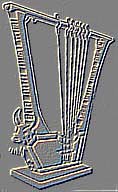


Assyrian symbols: the lyre, "kithara", written characters, emblems, flag.
The idioms and symbols on Assyrian Internet sites can be considered from various perspectives:
- They represent different levels in the building of a national identity, a common culture, history, language and national symbols. Cf. the D.I.Y. nation kit above.
- At the same time they constitute "typical Assyrianisms", such as the letters of the alphabet and the kithara.
- Idioms and expressions are also influenced by the fact that they are part of an "Internet genre". The Internet is not just a means of communication but also an artistic form of expression with its own characteristic style.
These are the three ways of expressing Assyrianess through which Cyberland Assyria is created.
Common Activities. The Role of Music in the building of a Nation.
If it would have been possible without music!!!??? No way! No way! God only knows what would have happened, I swear. I've lived here since 1970 and I know. I've got to know nearly all the families that live here through music and through parties, and I know. (Joseph Malki, interview 3rd March, 1997).
This was the Assyrian musician and composer Joseph Malki's answer when asked if he would have been able to organise the Assyrians in Sweden in the 1970s if he hadn't been able to entice them to meetings with music and dance. Music plays the role of a pleasure-filled hub around which a large part of the work and activities of the group's societies revolve.
What makes music so special is that it can have several parallel functions simultaneously. Music can function directly as a centre for activities – for dancing or for music-making – and at the same time form a link to other people in other places. Music is an important part of our cultural identity..
On the cassette tape "In Black & White", the East Assyrian singer Linda George sings the song Malikta Shamiram (by Peter Jasim). Like so many other Assyrian popular songs the lyrics are about the home country in the Middle East, and the title, "Queen Shamiram" brings to mind the ancient Assyrian Empire.
MALIKTA SHAMIRAM
(Queen Shamiram)
Oh young men.
Oh gentlemen and young ladies.
Listen (all of you).
I will tell you a story about your country.
I am...
I am a dove
from Nineveh.
I have flown (and came) from Nineveh
Let me know
Let me know oh -homeless(landless) person
where is...
The patriotic son's of Ashur.
Let me know. (all of you).
Let me know oh homeless ones.
Where are they?
The patriotic sons of Ashur?
*
For thousands, for thousands of years I've been flying.
With hope
of returning to my country keeping me alive.
In Ashur,
in Nineveh and Arrbel, Garmoo.
One voice.
I heard calling us all.
It sayed show them,
show them the son and the daughter.
That way,
to the country, of -our mothers- and -our fathers-
Translation by Robert Oshana.
Click here to hear an excerpt from MALIKTA SHAMIRAM.
Linda George lives in the United States and is the idol of many young Assyrians, not least in Sweden, despite the fact that most of them don't understand her Aturaya dialect.
It is extremely common for cultural expressions to take on a special significance among people living in exile: music, dance, food and above all language become far more important and are far more visible in the new context. Read more about this in the section With music as a boundary marker.
Our identity can of course display itself in a variety of ways, as an individual awareness, for example, or as a collective identity as members of a group. Music can be an individual pastime or a uniting symbol which bonds people together. This is the way it works in Sweden when Assyrians meet together in societies, for instance. The role of music in the activities of immigrant societies has been described by several ethnomusicologists and ethnologists. One example in Swedish is Owe Ronström's dissertation (1992), which discusses the role of music among Yugoslav immigrants in Sweden during the 1970s and 1980s.
What makes the Assyrians specially interesting is that for the most part their music has developed in the diaspora. Many of the most popular singers, musicians and composers (the majority, in fact) work in Sweden, America and Australia and also to a lesser extent in Russia.
One reason for this is that all profane music-making was actually forbidden by their own Christian church in the Middle East. As far back as the 4th century, music-making outside the church walls had been forbidden by St. Afrem, patriarch of what would later become the Syrian Orthodox church. When the growing nationalism burgeoned in Syria during the years between the First and Second World Wars, advocates of a free Assyria realised the significance of a national music of their own.
Another reason is that there is often a greater need of uniting activities and symbols in the diaspora than in a "home environment". In multicultural societies such as Sweden music is often an important identity and boundary marker, which distinguishes different groups from each other. A music of their own is a prerequisit for visibility in the multicultural arena.
An important part of the national struggle was to "liberate the music", to make it possible for music to be used outside the church. That profane music was considered sinful had meant that the performance of instrumental folk music had been left to other minority groups in the region, mainly Kurds and Gypsies.
The leading composer in the new West Assyrian music which was written during the 1930s and 1940s was Gabriel Assad from Damascus. Assad died in 1997 and spent his last years in Sweden. He is regarded as a popular hero within the West Assyrian group.
When the Assyrian societies were building up their activities in Sweden during the 1970s, Gabriel Assad's songs were like a backbone for the Assyrian identity. He soon had his followers and a repertoire of Assyrian music gradually grew up, with Sweden as one of its main bases.
From an early stage the "expressive specialists" (singers, musicians, dancers, actors etc) became important symbols for the "Assyrian idea". That this is still the case is reflected by the fact that the present president of the Assyrian National Federation, Ninib Ablahad Lahdo (elected 1997), is one of the best known singers among Assyrians the world over. In an interview published in the magazine Hujådå, Lahdo was asked by the journalist Demir Aho if it was due to the fact that he is a singer that he was elected president:
In your opinion, was it the singer or the person Ablahad Lahdo who was elected to the post of president?
I don't think that people primarily chose the singer rather than the person because he is popular and well-known as a singer, even if there are certain people who may have reasoned this way. But for most of the others I think they chose the person Ablahad as president, because they think he's also capable of holding the position of president of the ANF. (Hujådå, May 1997)
Of course Lahdo is not prepared to accept that people voted for him in his role as singer. But at the same time it is obvious, not least since the question was posed in the first place, that his roll as a stage artist has played a part. In the Assyrian group in Sweden there are very few, if any, active politicians or other types of visible figures in Swedish public life. Since the Assyrian community to such a degree revolves round aesthetic forms, the people that control these forms – the expressive specialists – automatically become the centre of focus. This fact separates aesthetically based communities, such as the Assyrian virtual world, from other types of nationalistic goals.
Read more about the modal system of the church music.
Football
Sports also have a central place in activity-based communities. In Sweden the Assyrian Football Club is a very good example. "Assyriska", a football team which is based in Södertälje, south of Stockholm, plays in Division I (the next highest series) and is the most successful immigrant team ever in Swedish football.
The team has a definitely "un-Swedish" image, particularly at matches, where music and dance are important features. Unlike other "Swedish" football fans, Assyriska's supporters mainly make use of folk music. Assyriska has become a symbol of the new sporting Sweden, a country of multicultural sports, and over the last five years the football team has been given ample coverage in sports programmes on TV. In particular the exotic "immigrant party mood" at matches is often emphasised in TV features.
Assyriska has also meant a great deal to the Assyrian group in Sweden. The popularity of the team has meant publicity and visibility for Assyrians in general. At the same time it is a less well-known fact that the team consists of football players of ten or more different nationalities.
If you click on the image (above) you will come to the Assyrian Football Club's home page. Take the opportunity to listen to Juliana Jendo in Joseph Malki's 'laime du fotboll (N.B. "fotboll" with Swedish spelling).
At first glance it seems strange that Swedish, Turkish, Serb and Latin-American footballers can play in Assyriska. But if we look at the rest of the football world we soon discover that this is not an unusual phenomenon. Nearly all major European clubs consist of players with different origins and nationalities. The sociologist Aage Raadman uses the terms "Gesellschaft" and "Gemeinschaft" (after Ferdinand Tönne) to distinguish between the team's instrumental community (Gesellschaft), which is governed by contracts and salaries, and the supporters' non-profit-making community (Gemeinschaft), which is based on the values that the team is presumed to symbolise apart from purely sporting values (Carlsson 1997). In many ways football resembles music as an activity. Since there is a dearth of folk musicians in the Assyrian group, their dance music is often played by musicians from other ethnic groups. In both football and music the need for competence far outweighs any demands that musicians or football players should be of the "right" ancestry.
Mass media
"Even if we're on our own at home, when we put the TV on we become part of a cultural community (be it good or bad)", Peter Dahlgren wrote in his article TV och våra kulturella referensramar (TV and our cultural frames of reference, 1990). A glance along the high-rise blocks of flats in Alby and Rinkeby (two Stockholm suburbs with a high percentage of immigrants) confirm the need for TV programmes in our own language. On nearly every balcony there is a huge satellite dish turned upwards towards the skies. Via parabolic aerials and satellite receivers, Turkish, Arabic and Latin-American immigrants in Sweden can see the same TV programmes as their compatriots in their homelands – simultaneously! These trans-national links undoubtedly play a highly significant part in establishing and maintaining cultural frames of reference.
Assyrian TV channels are available in the United States but are almost non-existent in Europe. Transcriptions that are at present being shown on trial once a fortnight via the Kurdish satellite channel MED-TV in Germany are an exception.
Like many Assyrians, the journalist Augin Kurt considers that the lack of Assyrian TV could present a great danger, since Assyrian youngsters are instead drawn to the Turkish and Arabic channels. Kurt considers that because of the music on offer on these channels there is an obvious risk that young people will be attracted to Arabic and Turkish popular music, and that the development of Assyrian music will come to a halt (Augin Kurt, interview 1st June, 1997).
But TV can also be transmitted via Internet. The introduction to this page shows a flashing logotype belonging to KBSV-TV23 Assyria Vision, one of two East Assyrian TV channels that transmit directly via World Wide Web.
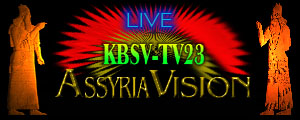
The second channel is linked to Nineveh On-line:
Historical/scientific documentation
The right to a history.
The term "Assyrian" denotes a national and ethnic identity. In calling oneself Assyrian one is claiming kinship with the ancient Assyrian high culture, while the term "Syrian" indicates membership of a church. In Sweden the "name issue" has been the subject of discussions among representatives for the Syrian Orthodox church, as well as among Swedish authorities, historians and philologists. In 1982 the Swedish National Immigration Board and the National Council for Cultural Affairs published Bengt Knutsson's book Assur eller Aram (Assur or Aram). Among other things Knutsson discusses the Assyrian/Syrian name issue. His scientific analysis of "the right" to an Assyrian identity – the right to call oneself Assyrian – has extended the discussion to cover such questions as to whether kinship with the "ancient Assyrians" can be proved (later also in Karlsson 1991). Paradoxically, today we can observe how Syrians in Sweden are now trying to find a language-based ethnic identity as Arameans.
Today research and other attempts to find scientific proof of kinship with the inhabitants of the Assyrian Empire is presented to a large extent on the Internet. Assyrian libraries are mainly being established in America. Virtually every Assyrian home page on the Internet publishes (or provides links to) articles which try to describe the historical background to the Assyrians' situation today, as well as presenting research on the Assyrian Empire.
Information banks have for instance been established through C.A.S.A's website (Chaldean American Student Associations).
Historians' and archaeologists' research into the Assyrian Empire forms a scientific background to the Assyrian national concept. Assyria is something to be proud of. On several Assyrian home pages there are links to historic archives, lists of Assyrian kings and reports from excavations. ´
The Assyrian martyrs perhaps play an even more important part in the awareness of a common history. On the 7th August every year, "Martyrs' Day" is celebrated by Assyrians throughout the world, both East Assyrians and West Assyrians. The role of martyrs for the national identity is obvious; "Our beloved martyrs who gave their lives for their Culture, Language, and God".

A home page with the title "Genocides Against the Assyrian Nation" presents a massive chronological overview of Assyrian martyrs, from the fall of the Assyrian Empire in 612 B.C. up to 1997. The emphasis is on incidents during the 20th century, such as massacres of Christians during the Second World War and other incidents which have led to the Assyrians' situation today.
The Assyrian situation has been described in musical guise in many songs. Perhaps the most direct example is Evin Aghassi's "An Appeal to the United Nations" to a text by Givergis Aghassi on the record "United Nations". In the last verse the Assyrian people are likened to an eagle which is forced to live in exile in the mountains.
The eagle lives in the mountains.
He cannot show himself all at once.
Don't break its flying wings.
-until when- shall it be safe to fly.
We shall cultivate with our own hands
and earn our -daily (blessed)- bread.
Just give us our freedom
and we shall all live as neighbors.
Translation by Robert Oshana.
National songs such as the one by Aghassi above follow a tradition which leads back to Gabriel Assad's almost revolutionary activities in Syria during the 1930s and 1940s. But what were the sources of Gabriel Assad's "new" Assyrian music? Assad, like his successor Joseph Malki, often emphasises the importance of Syrian Orthodox church music in this connection. In presentations of the history of Assyrian music, Assad's work is commonly regarded as a conquest. The church deprived its members of their everyday music-making and now, 1,600 years later, the people have taken their music back.
Although Assyrian national music has been created during the 20th century, the link to Syrian church music gives it a kind of historic legitimacy. This fact is often pointed out by present-day Assyrian musicians:
We have a musical legacy which goes back to the time before the Turks. Our ancestors sang this music. So these maqams existed. We know that Mar Afrem the Great and Bar Daisan taught these maqams, these scales in the church music, to pupils in Antioch and in Edessa and Nsi bin (which is called Diyarbakir today) as early as the 11th century. And then Arabic music, if you analyse Arabic music – we have eight maqams in our cultural legacy, they are bayat, rast, sigah, hidjas, nahavand, saba, we have these eight scales in our music. The Arabs have borrowed them. Many Arabic history books openly admit that we were the ones who created this sort of music. If we start out from this historical background, obviously I can say that it is our music that we have practised, it's our legacy. Plus that there are nuances that are not like Arabian, Kurdish or Turkish music. There are nuances and meaning in music, the musical sentence structure which distinguishes it from all of these. (Joseph Malki, interview 3rd March, 1997).
Malki also provides arguments for the Assyrians' right to the music. In his discussion he tries to produce historic evidence that modal music was used by Assyrians long ago to prove that the tonal language of Middle Eastern music is more Assyrian than Turkish, for instance. The fact that Assyrian high culture existed before the Ottoman and Arabic cultures is a strong argument in many Assyrians' eyes in the fight for their right to the music.
Read more about church music and its relation to modern Assyrian popular music in the section The liturgy of the Syrian churches.
National Ideology. A political community.
The idea of an Assyrian nation was aroused in earnest after the genocide on Armenians and Assyrians in Turkey during the First World War. Many Assyrians fled from persecution to the region which today is Northern Syria and which was then a French mandate. There the idea developed of an Assyrian state of their own. Cultural champions went into the breach who fought for a homogeneous Assyrian language and culture. One of the most influential of these in the West Assyrian group was the poet Naum Faik. Faik, who lived in America, wrote in lyrical terms about his ancient homeland, emphasising the Assyrians' historical ties to the ancient Mesopotamian culture.
At this stage the resistance men in this cultural liberation struggle were Turks and Arabs, as well as the Assyrians' own church. As early as the 4th century profane music-making had been forbidden by St. Afrem, patriarch of what would later become the Syrian Orthodox church. Thus it was also partly a battle against the decrees of the church that was being fought by the nationalistic representatives. To "liberate the music", to make it possible to use the music outside the church was an important part of this battle.
Within the Ottoman Empire, which was the dominating political power in the Middle East from the 15th century up to the First World War, religion was the main grounds for classifying people. Nationality, or whether someone regarded himself as a Turk or a Syrian etc. from an ethnic perspective, was of less significance. In the Ottoman Empire the most important political category was also a religious category; Muslims were inhabitants of "The House of Islam" Dar ül-Islam
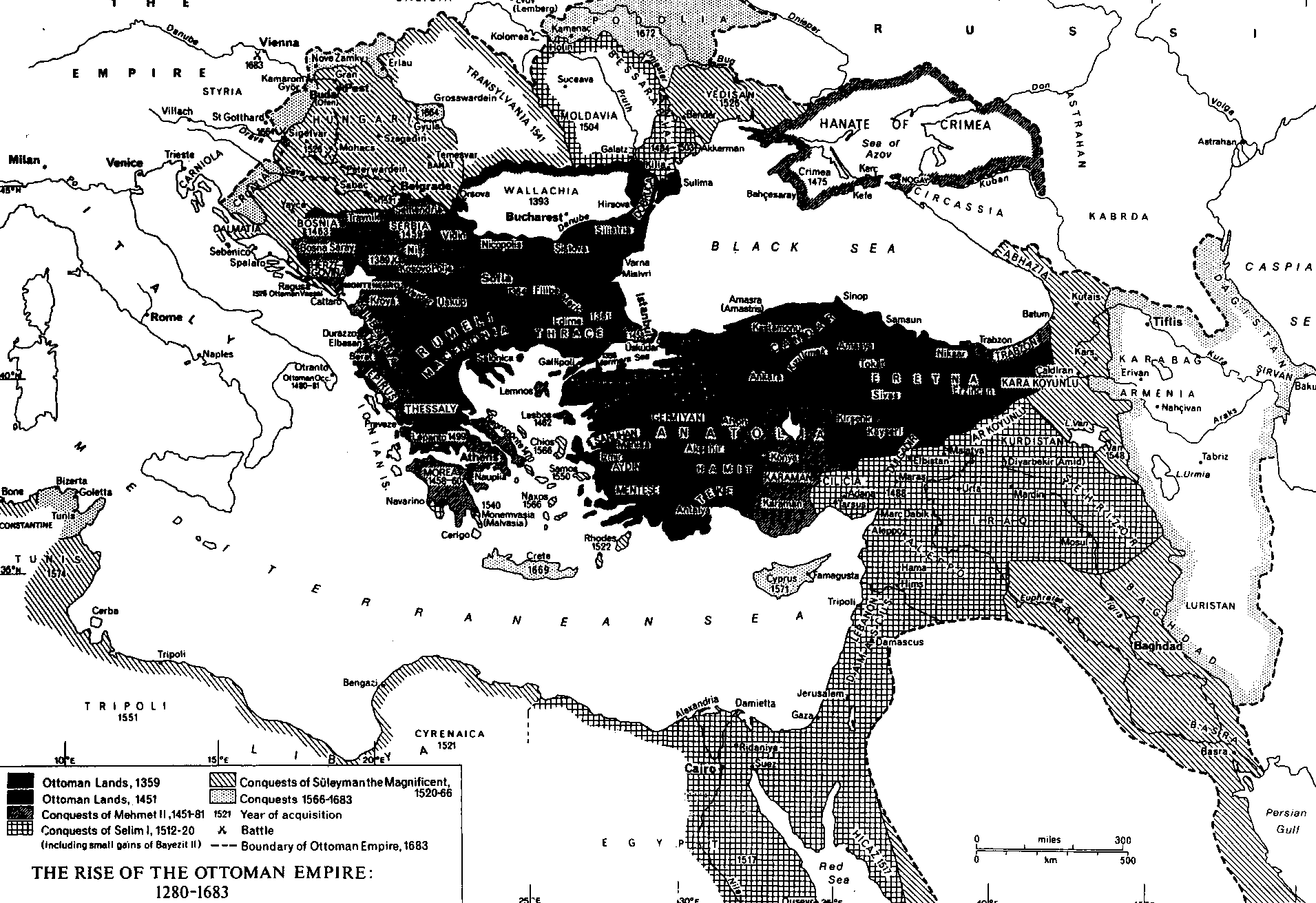
The Ottoman ruling class was a mixture of Turkish military officers, certain members of the priesthood of the Orthodox church, Jewish and Greek merchants and bankers, scholars and writers of Persian, Arabic and sometimes even Balkan origin and others. It was not until the 16th and 17th centuries that the Ottoman ruling classes came to be dominated by Muslims.
The subordinate classes, re'aya, consisted, like the ruling class, of a diversity of ethnically and religiously defined groups. Different Muslim congregations were organised in millets (approximately nation, body). Groups living in the Ottoman Empire that were part of a millet were allowed a kind of religious and ethnic self-government. Taxes were imposed but they were allowed to manage their own internal affairs. Even non-Muslims seem to have been organised in millets in certain cases (cf. Lapidus:324). The basic rule was that minorities with Jewish or Christian beliefs were to be left in peace as long as they kept a low political and economic profile and paid their taxes. Judaism and Christianity were regarded as brother religions since they, like Islam, were based on the Old Testament. This system also granted people the right to schooling and religious education in their own language right up to the 19th century. The non-Muslim groups that lived in the Ottoman Empire were named dhimmi (protected people), tai'fa (group) or jamat (religious congregation), depending on how they were organised. Through local agreements with the Ottoman rulers these groups were organised in millets or given similar rights to the members of a millet.
The system encouraged ethnic and cultural pluralism and was one of the prerequisites which enabled multinational centres of commerce such as Istanbul to function within the Islamic world.
The Christian identity was regarded as most important by Syrian Orthodox Christians in Tur'Abdin, and in fact the group of Christians in Sweden today who come from the Middle East and who call themselves Syrians are continuing in the same track. However, when part of this group of Syrian Orthodox Christians began to call themselves Syrians (Swedish, syrianer), the basis for religious classification was set aside. (In recent years, however, Syrians in Sweden have begun to identify themselves as Arameans.)
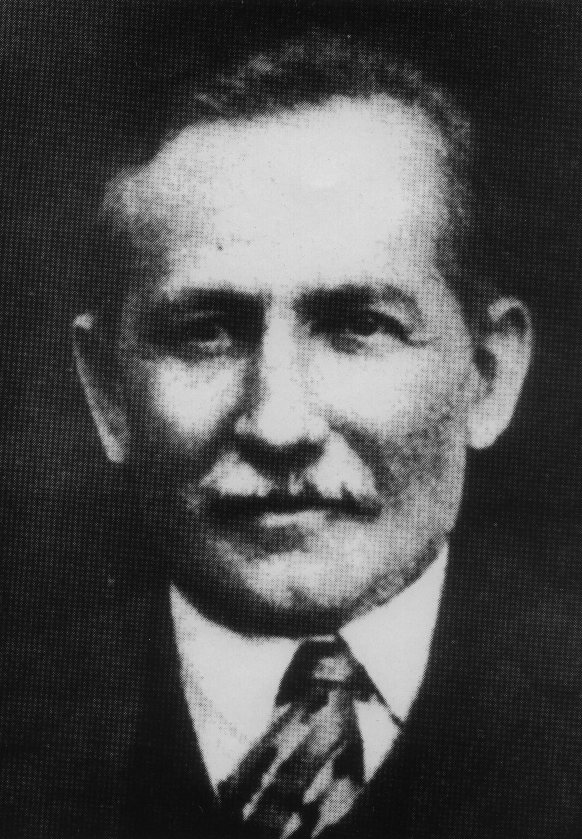
The author and poet Naum Faik (1868-1938). Source: The Assyrian National Federation's magazine Hujådå.
Naum Faik's work at the beginning of the 20th century was not only a matter of reinforcing the ties with ancient Assyria, he also wanted to ensure that nationalistic ideas were disseminated. Publishing magazines was one means of achieving this aim. One of these magazines was Hujådå, which Faik founded in 1921. Today the magazine is issued under the same name by the Assyrian National Federation in Sweden.
The musician and composer Gabriel Assad worked along similar lines when he began his nationalistic activities among Christians in Syria. When asked what he hoped to achieve with the national music, Gabriel Assad answered:
My aim was to cause a revolution with music. And I thought I could do it. So that the songs and the music would belong to the people. And I reached this goal and that makes me very happy. I travelled around – through Syria, the whole of Syria, then Israel and Lebanon and taught the poems and music which you now find in Assyrian and Syrian schools. And all these people learned them.
Assad's nephew Afram Some (who acted as interpreter during the interview) added:
He made a book. It was in 1952-53. The first book about music. He travelled around but he was very poor too. Nobody helped him, either financially or with anything else. But he went on fighting all the time. (Gabriel Assad and Afram Some, interview 10th March, 1997)
To reach out with his message Assad need an organisational platform, and this was provided by a cultural centre which was founded in 1958 in the town of Qamishli in Northern Syria. Assad worked as musical director at the centre and could thereby intensify his work of composing national songs. Through his educational work at the centre and by issuing records and books he was able to reach more and more people.
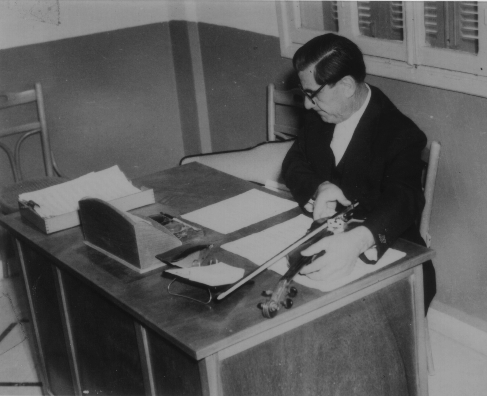
Assad at his writing desk at the Cultural Centre in Qamishli.
Music is a large and important part of the process of building an Assyrian nation. In certain cases it acts as a "lubricator" in processes that are designed to create a sense of community. Music undoubtedly plays an important part as a uniting force at meetings and parties. This is how Joseph Malki expresses his views of the role of music in society activities:
So we began to organise parties in Motala, in Linköping and in Gothenburg where the Assyrians lived. The simple fact is, it all started with the help of the music.
So you can say that by organising parties people were brought together? Well, that's how we attracted people. And people began to like each other. And began to get stronger ties, and love and relationships and people began to feel less isolated. The isolation was broken, and they felt that somebody cared about them. And music – I think that that is the greatest element one can use to show that people care for each other and have feelings for each other. And these human (Joseph Malki, interview 3rd March, 1997)
But music can also be a medium through which the national idea can be spread, or it can be used as a pedagogical tool in language tuition, for instance. Maybe these are the two most important aspects of music; its ability to be both an actual part of culture itself and at the same time to serve as a transmitter and symbol of cultural community.





